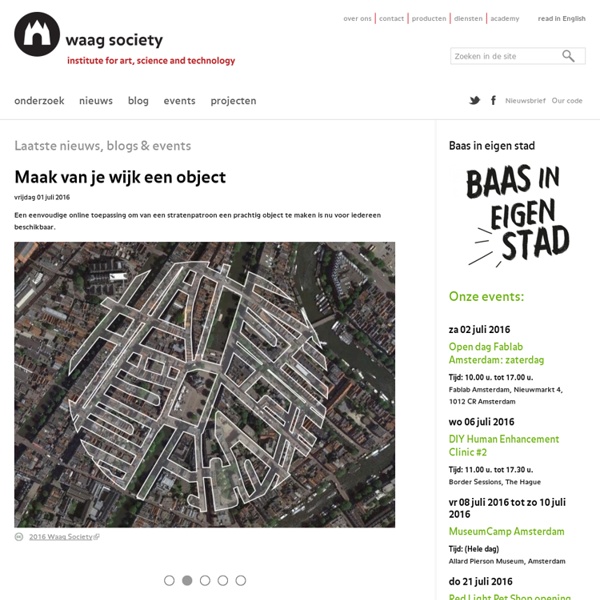



Using GIS to Form Resilient Public Health Plans As Negative Health Effects from Climate Change Grow, Sophisticated Technology Will Guide Preparation By Alex Philp, PhD, Upstream Research, Inc. The earth's climate is changing, and this will have a tremendous impact on human health. A Fresh Perspective on the Psychology of Scent “Odour, oftener than any other sense impression, delivers a memory to consciousness little impaired by lapse of time, stripped of irrelevancies of the moment or of the intervening years, apparently alive and all but convincing,” wrote Roy Bedichek in The Sense of Smell (1960). “Not vision, not hearing, touch, nor even taste – so nearly akin to smell – none other, only the nose calls up from the vasty deep with such verity those sham, cinematic materialisations we call memories.” It is memory that informs our taste for scent, and what links the notes of a fragrance to the inescapable and often subconscious feelings of nostalgia, joy, repulsion and sex.
The digital journalist’s toolbox: mapping Engaging and interactive journalism is still possible even without an extensive knowledge of coding. But how? We’ve taken the guesswork out, scouring the internet to find the most accessible tools to create multimedia content. Below, you’ll find a collection of completely free applications that will do all the work for you — no coding required: Esri Launches National Green Infrastructure Initiative for Planning Esri, the world leader in geographic information system (GIS) technology, has launched a suite of public mapping tools and data to help communities protect the places and natural resources that help people, wildlife, and the economy thrive. Leading the Green Infrastructure for the U.S. initiative, Esri has partnered with National Geographic Society to transform how U.S. communities plan development. By equipping local, regional, and urban municipalities with data and GIS tools, Esri president Jack Dangermond envisions communities working together to build a green infrastructure—a strategically managed network of open spaces, watersheds, wildlife habitats, parks and other areas that deliver vital services and enrich quality of life. With Esri’s green infrastructure planning tools, communities can identify, protect, and connect local places of natural and cultural significance before development occurs.
Taking Maps in a New Direction Apps bridge people to the things they want and the places they want to find via their phone, tablet, or PC quickly and effortlessly. Consumers specifically, use apps for their most basic needs and desires; checking the weather, listening to music, scoping out deals, finding new venues, and of course communicating with friends. With this information readily available, consumers have a more intimate, connected and relevant experience with your business. Bing Maps allows your application to: Quickly visualize data on a map—such as geographic coordinates, employee distribution and retail locations. Make GIS data more accessible to users in your organisation and across geographies with a web services solution.
Wednes-DIY: Making Natural Dyes Pin It I have been wanting to experiment with natural dyes for a while now, and with all the great new fall colors that have been popping up on our website (and featured in our monochromatic trend) I decided that it was time. This is such a fun, environmentally friendly project that takes a little time, but very little cash. For today’s DIY I’ll tell you about what natural ingredients you can use to make natural dyes, and what shades of color they will yield.
Technology: Use or lose our navigation skills Paul Grogan/PhotoPlus Magazine via Getty Images The paths of vehicles along Regent Street in London, revealed by long-exposure photography. In 1984, I was part of a team that was developing a receiver for a satellite-navigation system. After weeks of debugging, the blur of random digits settled on a location. We grabbed a map and plotted the point. The pencilled cross landed exactly on the building that we were in. Esri Partners with Waze Connected Citizens Program to Deliver Unprecedented Open Data-Sharing Option Global smart-mapping leader Esri today announced a new partnership with Waze, the free, crowdsourced traffic and navigation app that makes it easier for governments of every size, anywhere in the world, to begin building intelligent transportation systems in their communities. Governments already using the Esri ArcGIS platform can quickly and easily exchange data through the Waze Connected Citizens Program, a free, two-way data share of publicly available traffic information. Waze has set the gold standard on how to share and harness the power of anonymous, aggregated data to promote greater transportation efficiency, deeper insight into travel conditions, and safer roads.
DIY BioPrinter We started out by messing around with an old inkjet printer that we literally saved from a sidewalk somewhere. There's already plenty of interesting things you can do with an low-end off-the-shelf inkjet printer, but they do have some limitations, which we'll get into in the next Step (or skip straight to Step 3 for how we built our own bioprinter from scratch, that you can see in the first picture above). Undressing the Printer We disassembled an abandoned HP 5150 inkjet printer for use as a bioprinter. Just rip off all the plastic covers you can find, but make sure you can still operate the reset buttons etc. on the front panel. There's a little momentary switch that senses whether the cover is open.
Beyond the sea By Andy Woodruff on 24 March 2016 In the northern reaches of Newfoundland, near the town of St. Anthony, is the Fox Point Lighthouse. I’ve never been there, but I know it has one of the most impressive ocean views in the world. If you face perpendicular to the right bit of rocky coastline there and gaze straight across the ocean, your mind’s eye peering well beyond the horizon, you can see all the way to Australia.